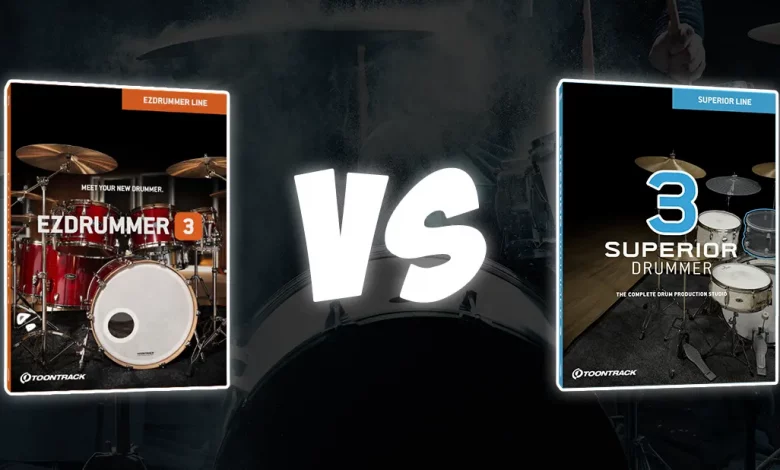
We may earn a commission from the affiliate links on this site. Learn more›
If you’ve checked out our recent reviews on Toontrack’s EZDrummer 3 and Superior Drummer 3, you’ll know that we’ve been building towards comparing both drum libraries.
It feels as though it’d be wrong to skip over this part: both libraries are fantastic—and both are a clear upgrade on their previous incarnations – but they offer different things and come in at very different price points.
If you’re anything like me, you might feel torn between a desire to save some cash and a temptation to go all-in, almost for the sake of it. Anyway, no one wants to fall into the ‘buy cheap, buy twice’ pitfall, right?
It’s probably best to spend some time considering the pros and cons of each library to see which one hits the sweet spot for you.
If you haven’t looked at the previous reviews of Superior Drummer 3 and EZDrummer 3, I recommend it. This is a comparison between the two, and, to save on repetition, I’ll skip over some finer details discussed in the previous reviews.
If you’re good to go, grab a coffee, and we’ll jump in.
What’s the Big Idea?
Swedish company Toontrack consistently releases great production software, and their recent drum libraries are no exception.
EZDrummer 3 sits at a much lower price point and boils down the essentials into one light memory package. Superior Drummer 3 is the mother ship, which exists to fulfill the needs of even the most demanding professional.
New in 2022 is EZDrummer 3 from Toontrack. They've reinvented the role of drum production software in a songwriting context.
Maybe you’re tempted to make a decision based purely upon this knowledge, but that may be a little hasty. EZDrummer 3 combines fantastic quality samples with an easy-to-use interface, and to think of it as an ‘amateur’ option would be a mistake.
SD3—by contrast—can feel overwhelmingly large, and it’s so flexible that it almost invites analysis paralysis. But on the other hand, it also contains several features for non-drummers so that it can be accessible to all.
The best drum sampler around boasting 230GB of sounds captured at Galaxy Studios by the legendary producer George Massenburg.
With this in mind, you probably see why it might be over-simplistic to assume that one is wholly for pros and one is only for hobbyists.
Comparing Specs
EZ Drummer 3 contains seven kits, as well as twenty-four snares, fourteen kicks, and thirty-three cymbals of different kinds. It includes some exciting percussion options, too, with various shaker, tambourine, handclap, and stomp samples.
It includes three live rooms and comes with the intuitive Grid Editor, Bandmate, and Tap to Find features (more on later).
It isn’t as flexible as Superior Drummer 3. Each kit is processed with a base level of simple effects, and those can’t be removed—however, it does sound great out-of-the-box. It weighs in at a streamlined, hard drive-friendly 15GB.
Superior Drummer 3 offers seven kits too, but, by contrast, includes twenty-five snares, sixteen kicks, thirty-two cymbals, extra percussion, and 350+ electronic samples.
It also offers all of the user options that EZ Drummer 3 does but doesn’t include the Band Mate feature.
Glancing through these specs will show you how good EZDrummer 3 is. It contains as many kits, nearly as many drums, and almost a few hundred more preset loops and fills.
Where Superior Drummer does come out on top, though, is in its extensive mixer, which matches most DAWs for scope, and its unparalleled level of detail.
It’s a little heftier and will cost you a whopping 230GB of hard drive space (that’s a 215GB size difference, by the way!!).
As you’d expect, both libraries offer powerful ways to write drum parts and great-sounding samples for recording. In addition, both libraries provide an alternative to a pre-loaded interface/brain for electric kit players.
Suddenly, that inexpensive Alesis Nitro kit of mine sounds cooler than ever (although the scope of their gear limits users; an electric kit that doesn’t register ghost strokes, for example, won’t suddenly start to do so).
The User Experience
EZ Drummer 3 and Superior Drummer 3 have undergone a facelift compared to their previous iterations. Both interfaces look sharp and modern. The images representing each kit are shiny and new, and each live room looks inviting. All the images accurately represent the samples they convey.
This might not make a difference to everyone, but I think it makes the software a little more pleasant. It’s an ‘extra 1%’ thing, I guess—and an improvement over previous versions. The fact that users can now resize the window of both libraries is also a genuinely helpful upgrade.
It means that you won’t be moving the interface around, frustrated at your inability to make space in your DAW (this was a commonly reported drawback to previous versions of both libraries, especially for small screen users).
Superior Drummer 3 is supposedly the more complicated library to use, and I think this is true, but when I first opened it up, I was surprised by how easy it is to navigate the main menus and get started.
In this way, SD3 is a bit like concrete—easy to walk on top of but hard to dig deep into. Yet, in some ways, the basic features of both libraries feel pretty similar.
The Grid Editor—a super intuitive way to write grooves, fills and percussion patterns—is essentially the same in both libraries. I love how easy it is to change the velocity and articulation of each note.
There are also ‘humanize’ options in both Grid Editors, which can add an expressive quality to grooves that sound too robotic. As a result, you’ll end up with similar results from both software libraries on this score.
The Tap to Find and Song Creator features—which offer easy ways to find appropriate grooves and to build entire song structures—both operate in the same sort of way, too.
Both software packages are equally handy for basic audio editing and midi replacement; it’s easy to load samples into them and improve timing and tightness with this method. Superior Drummer 3 offers more options on this front because of its extensive mixer.
EZ Like Sunday Morning
EZDrummer 3 does have a few strengths over its bigger brother SD3. First, as noted earlier, the core EZ Drummer 3 library contains more loops than the SD3 one, so its version of Tap to Find has more options to draw on, at least, in theory, anyway.
Band Mate only features on EZDrummer 3. Although, maybe this reflects Toontrack’s intention to make EZD3 a safe bet for non-drummers. It’s such a helpful tool that it could be a real advantage over SD3 for many users.
It’s another way EZD3 feels eminently useable to just about everyone with a bit of musical experience.
Finally, EZ Drummer 3’s pre-processed kits sound solid right out of the box. This is great for users who don’t mix drums to a high standard or want to prioritize speed and ease of use.
The samples are less flexible due to pre-processing, but this is still subtle enough to allow plenty of mix options.
Memory Lane
One of the most essential useability factors in music production is RAM efficiency. Software that heavily uses a computer’s resources is likely to stall and glitch; nothing is more annoying than swimming upstream against clunky programs when you’re trying to be creative.
Interestingly, EZ Drummer 3 tends to come out on top here. This is because superior Drummer 3’s larger size means that it’s much thirstier on a computer’s memory.
One or two SD3 kits are particularly prone to this trait. People serious about music production usually have more processing power on their machines, and after all, SD3 does bill itself as the more ‘serious’ choice out of the two. Maybe SD3’s target user will have enough CPU to render this point irrelevant.
Toontrack has come up with some intelligent solutions to SD3’s memory levels anyway: you can use the library’s cache mode to ‘freeze’ some channels, reducing the burden on your system’s resources.
Superior Software
Superior Drummer 3 probably can’t emulate the slick, lightweight agility built into the EZDrummer 3 fabric, but it boasts layers of detail that EZD3 just doesn’t contain.
Quite apart from being a software library, SD3 feels—at times—like a sound design package or a DAW in its own right. I mentioned EZDrummer 3’s ease of use earlier, but there’s a level of accessibility built into SD3, as well.
Okay, so all of the samples are raw, but thanks to mixer presets from George Massenburg, Bob Rock, Andy Sneap, and Richard Devine, users aren’t left entirely on their own.
Nevertheless, if you want to delve into more intricate mixer tools, such as bus routing and aux channels, you can do that here to your heart’s content.
As noted earlier, the mixer is pretty much as extensive as a DAW one, with over thirty processing effects, 11.1 surround sound capability, and even the ability to raise and lower levels of mic bleed.
SD3 does give users a whole level of creative control possible. Users even can pull up individual drums and adjust attack, release and sustain levels. This is possible with stacks of samples, too, so each sample in the stack can be refined and behave differently from other samples.
It’s possible to blend and fuse sounds to make the sonic possibilities seem almost endless. For all SD3’s initial tidiness and accessibility, there’s a steep learning curve if you want to get the most out of it.
There’s a whole load of resources out there online that detail a host of options for using Superior Drummer 3’s extra firepower in some exciting ways. So if you’d like to find out more, go hunting.
An excellent place to start is probably Toontrack’s website, which demonstrates some standout features you could easily miss at first glance.
Both As Bad As Each Other?
Okay, that’s a provocative subheading. But there are a few cons to both pieces of software. My main gripe is with the lack of extra options for percussion and brushes, beaters, and rods, in both software libraries.
To add more sample options, Toontrack has released a whole load of add-on packs that expand both libraries almost endlessly, but you have to pay for those.
I’d have loved at least one of the libraries to have more extensive options for jazz, roots, and percussion players. Unfortunately, it seems like a significant subsection of drumming to skip over.
Presumably, Toontrack would say that they’ve created two software libraries with a rock-solid core, that both work well, and that expansion options are available.
I see the trade-off between extra content and usability (as we noted earlier, SD3, in particular, is already vast). Still, nevertheless, it seems a shame that there’s a lack of initial options in some of the other approaches to drumming.
Which Should I Buy?
An excellent way to frame the difference between EZDrummer 3 and Superior Drummer 3, would be to picture an aircraft carrier and a speed boat.
You can probably take an aircraft carrier to go fishing, and you can probably try using a speed boat to invade France (sorry to any French folk reading!), but—in the end—it’s probably better to choose the right tool for the job.
I don’t want to stretch the analogy too much, but you could make the argument that an aircraft carrier is probably more attractive to people who love complex machinery, but a speedboat is much better for people who want to get out onto the ocean and go somewhere.
One is more technical, one is more immediate. One offers more options. One gives you simplicity. If you’re the kind of person who loves making music and wants to get on with it, EZDrummer 3 could easily be the best option for you. It’s not lame. It’s not just for beginners—just a little more straightforward.
If you love tweaking, exploring, bending, breaking, and remolding, Superior Drummer 3 will offer you an unrivaled opportunity to do that in the context of a drum library.
If you’re operating at the highest level of music production—or if you’re aiming to—Superior Drummer 3 is probably the way to go, even if you need to swallow a learning curve to get it up and running.
This is true, if only because SD3 has raw samples available (in addition to mixed presets), so you have a full spectrum of mixing options available to you, in the same way that you would if you’d mic’d the kits yourself.
It’s important to distinguish between music production and songwriting, though. Songwriters and home recording engineers could easily find that EZDrummer 3 is enough for their needs, and, to be honest, in a blind shootout, I’m not sure if I’d be able to pick out the difference between the two in a mix.
Two other factors to bear in mind are the cost and memory usage of both libraries. EZDrummer 3 is less expensive, and it’s a lot lighter on memory and RAM too. On the other hand, it takes a few hours to download, whereas SD3 could easily take a few days of on-and-off downloading.
So, there’s a straightforward way to choose between the two here. SD3 users will be delighted with their choice, so long as they have the processing power to run it smoothly and have the patience to learn how to get the best from it.
EZDrummer 3 users shouldn’t feel like they’re missing out. They have enough to satisfy the needs of most users and will have some extra cash and CPU to play with, too.
Here’s one final option that I’ve come across recently – if you’re really torn, you could always buy both and use EZDrummer 3 for writing parts and Superior Drummer 3 for adding polish to them.
Also, EZ Drummer 3 EZX Sound Expansions will work with SD3. However, it’s important to note that sound expansions specifically made for SD3 will not work with EZ Drummer 3.
I guess that’s like fishing on a speedboat in the morning and invading France in your personal aircraft carrier in the evening. Or maybe that’s going a bit too far.
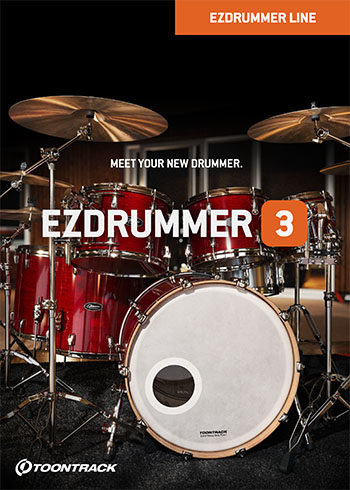
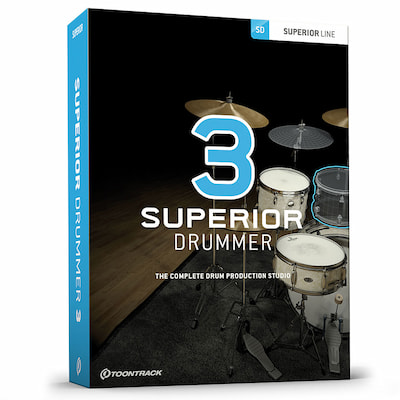

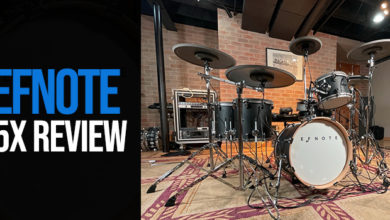
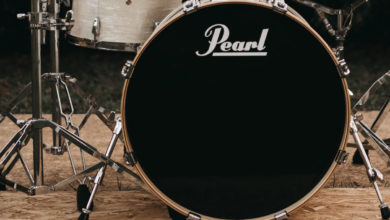

Thank you for a great comparison 😀 great read
0
Maybe it won’t do any harm to mention thar EZD3 is much newer than SD3 (and thus practically a generation ahead of its bigger sibling), which helps explaining why it has some great features (such as the mentioned Band Mate) and improvements/refinements the other lacks. (So we will have to wait for SD4 to get them in there as well).
0
Great blog
0
I play a Roland TD17 for live performances (classic rock, Motown, dance, etc.) and would like to have better sounding drums than the kits in the TD17 sound module. I am considering triggering SD or EZD via the midi interface. Which version should I buy?
0
For ease of use and decent sounds, I would just get EZ Drummer 3. There’s a lot of good additional sound packs you can get if you’re not happy with the stock sounds (which, IMO are great already).
0
Excellent article….well written and explains the differences clearly. Excuse the question as I am a bit of a noob but does either software have recording capabilities built in or will I need a separate program/software for that?
0
Both EZDrummer 3 and Superior Drummer 3 have a standalone mode, though it’s been a while since I’ve used them in that capacity without a DAW. I know you can play in standalone mode, but I’m unsure if you can record and export to an audio file. If you’re looking to play along to music and record, I think you will for sure need DAW software. Reaper is really affordable and popular among a lot of people, but I like Ableton and Cubase the most. They have entry-level versions that would easily get the job done.
0
You did not mention anything about using these two with drum triggers.
0
Drum triggers theoretically should work flawlessly with either. But I don’t have any experience with drum triggers to give an accurate opinion (yet).
0
Great article! Thank you!
0
I appreciate this review. I just bought another efnote3x as I gave my son the first one.
I have a intel i7 macbook pro with a huge ssd on it so memory isn’t an issue.
I just want to run this software and be able to feed the music I’m playing to. Do I need a daw for that?
0
Hi Patrick. Both EZ Drummer 3 and Superior Drummer 3 have a standalone mode, so you don’t need to use a DAW. However, you will need a DAW for more advanced recording features. But for just playing they will work great.
0